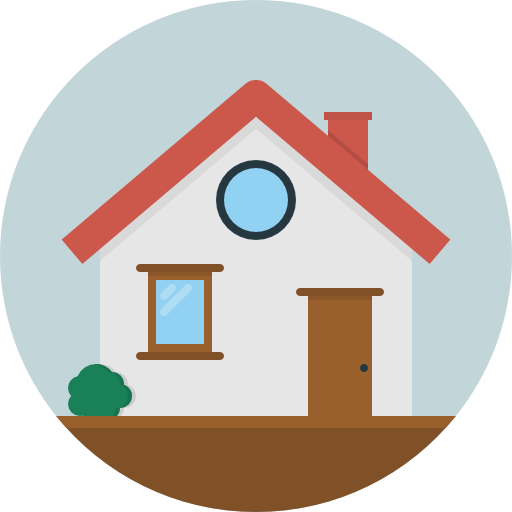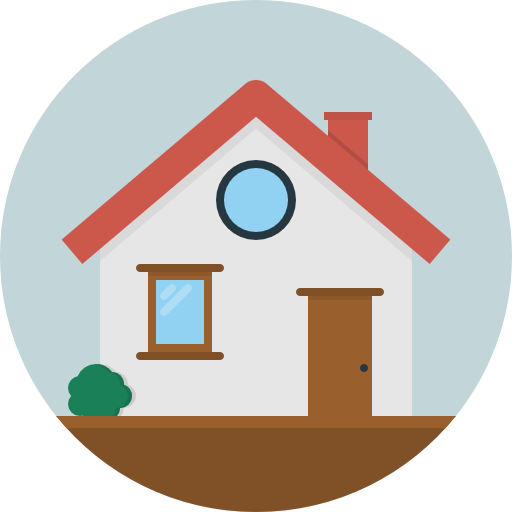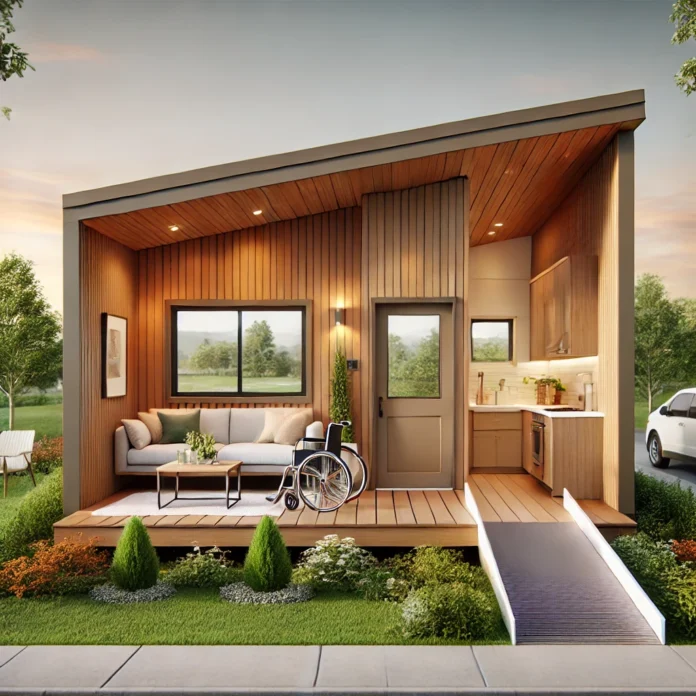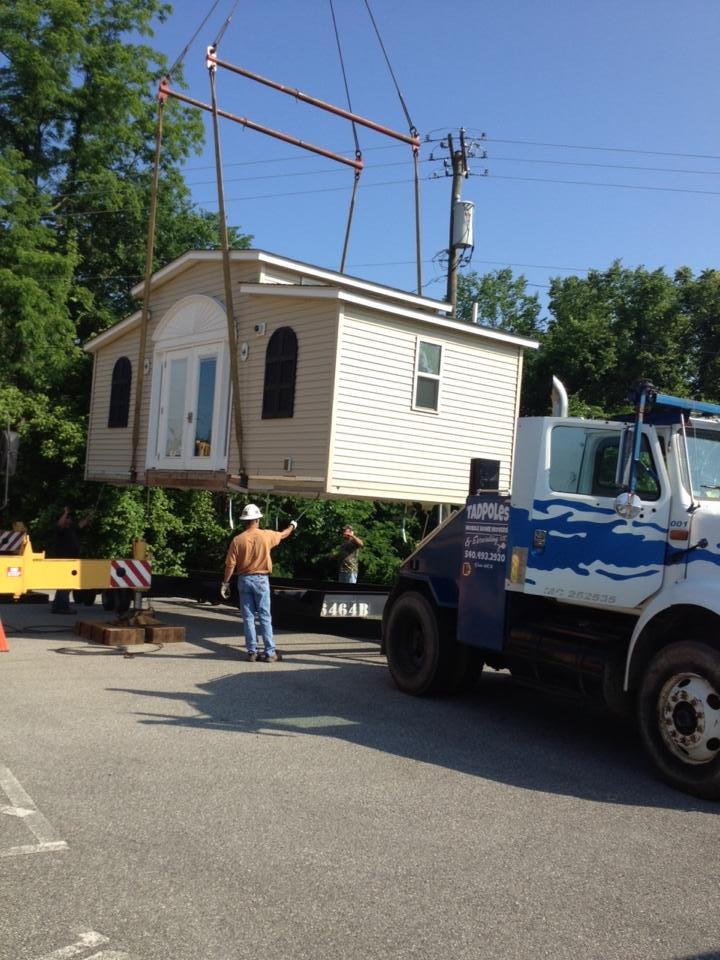As our parents age, many of us face the challenge of finding ways to ensure their comfort, safety, and independence while keeping them close. While nursing homes or retirement communities have traditionally been the go-to solutions, more families are now opting for a modern, cost-effective alternative: Accessory Dwelling Units (ADUs). These small, self-contained homes built on the same property as a single-family residence offer the perfect balance of proximity, independence, and personalized comfort.
Designing an ADU for an aging parent isn’t just about building a structure; it’s about creating a space that feels like home while catering to their current and future needs. In this guide, we’ll walk you through the essential considerations, design principles, and features that can turn an ADU into a sanctuary for your loved ones. By the end, you’ll have the tools and inspiration to craft a space that combines functionality, safety, and style.
Why Build an ADU for an Aging Parent?
1. Maintaining Independence
Aging doesn’t mean losing autonomy. An ADU allows your parent to live on their own terms, cooking meals, enjoying hobbies, and hosting friends without feeling like a guest in your home. It’s their space, their rules — but with the comfort of knowing you’re just a few steps away.
2. Fostering Family Connection
Keeping family close is invaluable. With an ADU, you can regularly check in, share meals, and create lasting memories without encroaching on each other’s personal space. Grandparents can bond with grandchildren, and you’ll always have peace of mind knowing your parent is nearby.
3. Cost-Effective Care Solution
Long-term care facilities can be prohibitively expensive, often costing thousands of dollars each month. Building an ADU is an investment that not only saves money in the long run but also adds value to your property. Plus, when it’s no longer needed for your parent, the ADU can serve as a guest house, rental unit, or home office.
4. Personalized Living Space
Unlike senior living facilities, an ADU can be tailored to your parent’s specific preferences and needs. From layout to decor, every element can reflect their personality and make aging in place a joyful experience.
Best Design Principles for an Aging-in-Place ADU
When designing an ADU for an aging parent, the focus should be on accessibility, safety, and long-term usability. Here are the key principles to keep in mind:
1. Prioritize Accessibility
Mobility challenges are common as we age, so it’s crucial to create a space that’s easy to navigate.
- Single-Level Design: Avoid stairs and opt for a single-story layout. If space is limited, consider a compact design with all essential rooms on one floor.
- Wide Doorways and Hallways: Ensure doorways and hallways are at least 36 inches wide to accommodate wheelchairs or walkers.
- No-Step Entry: Incorporate ramps or a gentle slope at all entrances to make the ADU easily accessible.
2. Focus on Safety Features
Prevention is better than cure, especially when it comes to falls and accidents.
- Non-Slip Flooring: Choose materials with a high Dynamic Coefficient of Friction (DCOF) to reduce the risk of slipping. Vinyl, cork, and rubber flooring are excellent options.
- Grab Bars: Install grab bars in bathrooms, hallways, and near beds for added support. Even if your parent doesn’t need them yet, plan for their future installation by adding reinforcement behind the walls.
- Bright Lighting: Use even, glare-free lighting throughout the ADU. Motion-activated lights are particularly helpful in bathrooms and hallways for nighttime navigation.
3. Optimize the Layout
A practical, well-thought-out layout can make everyday tasks easier and more enjoyable.
- Open Floor Plan: An open layout minimizes obstacles and creates a sense of spaciousness. It also allows for easy maneuverability with mobility aids.
- Proximity to Key Areas: Position the bedroom, bathroom, and kitchen close to each other to minimize walking distances. An ensuite bathroom is a particularly valuable feature.
- Accessible Storage: Use pull-out drawers, lazy Susans, and adjustable shelving to make storage accessible without excessive bending or reaching.
4. Plan for Future Needs
Designing with adaptability in mind ensures the ADU remains functional as your parent’s needs evolve.
- Blocking for Future Modifications: Install blocking in walls to support future grab bars or other accessibility features.
- Flexible Spaces: Consider multi-purpose rooms that can be adapted for different uses, such as a hobby room that could later become a caregiver’s bedroom.
- Technology Integration: Smart home features, such as voice-activated lighting, fall-detection systems, and remote monitoring, can provide added safety and convenience.
Essential Features for an Aging-Friendly ADU
Kitchen Design
The kitchen is the heart of the home, and it should be both functional and accessible.
- Lowered Countertops: Include countertops at varying heights to accommodate seated and standing use.
- Drawer-Style Appliances: Install drawer-style microwaves, refrigerators, and dishwashers for easy access without bending.
- Induction Cooktop: These cooktops remain cool to the touch, reducing the risk of burns. Some models even have automatic shut-off features.
Bathroom Design
With 80% of falls occurring in the bathroom, this space deserves extra attention.
- Zero-Threshold Shower: Eliminate barriers with a walk-in shower that’s wheelchair-friendly. Add a handheld showerhead and a built-in or portable shower seat for added convenience.
- Raised Toilet: A toilet with a higher seat can reduce strain on knees and joints.
- Anti-Scald Faucets: Install faucets with temperature controls to prevent accidental burns.
Bedroom Design
The bedroom should be a restful retreat with features that enhance comfort and safety.
- Adjustable Bed: Consider an adjustable bed that makes it easier to get in and out or find a comfortable sleeping position.
- Night Lighting: Use under-bed lighting or motion-activated floor lights to guide your parent safely in the dark.
- Closet Accessibility: Install pull-down rods and sliding doors for easy access to clothing and belongings.
Living Area
The living space should feel warm, inviting, and easy to navigate.
- Comfortable Seating: Choose ergonomic furniture with firm cushions and armrests to make sitting and standing easier.
- Low-Maintenance Surfaces: Opt for materials that are easy to clean and maintain, such as stain-resistant upholstery and durable flooring.
- Entertainment Access: Position TVs and audio systems at an appropriate height, and ensure they’re easy to control with simple remotes or voice commands.
Inspiring ADU Design Ideas
1. Scandinavian Simplicity
Clean lines, neutral colors, and natural materials create a calming environment. Pair light wood floors with minimalist furniture for a timeless, low-maintenance design.
2. Modern Farmhouse
Combine rustic charm with modern amenities. Think shiplap walls, warm lighting, and a cozy fireplace paired with sleek, accessible appliances.
3. Urban Contemporary
Maximize space with smart storage solutions, bold accents, and sleek finishes. Use mirrors and glass to create an open, airy feel.
Cost and Value Considerations
Building an ADU is a significant investment, but it’s one that pays off in multiple ways. Here are a few financial factors to keep in mind:
- Upfront Costs: Depending on location, size, and features, building an ADU typically costs between $100,000 and $300,000.
- Long-Term Savings: Compare this to the average annual cost of a nursing home or assisted living facility, which can range from $60,000 to over $100,000.
- Increased Property Value: A well-designed ADU can significantly boost your property’s resale value.
- Rental Income: When no longer needed for your parent, the ADU can generate income as a rental property.
Conclusion
Designing an ADU for an aging parent is more than a construction project — it’s a way to show love, respect, and care. By focusing on accessibility, safety, and personal touches, you can create a space that enhances their quality of life while keeping them close to family.
Whether you’re just starting to explore your options or ready to dive into construction, remember that every detail matters. From no-step entries to drawer-style appliances, these thoughtful choices can make all the difference. Ready to take the next step? Consult with a design professional to bring your vision to life and ensure your parent’s golden years are as comfortable and fulfilling as possible.



